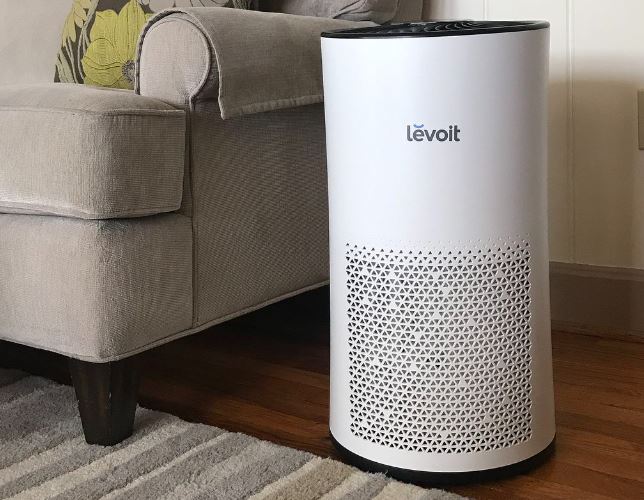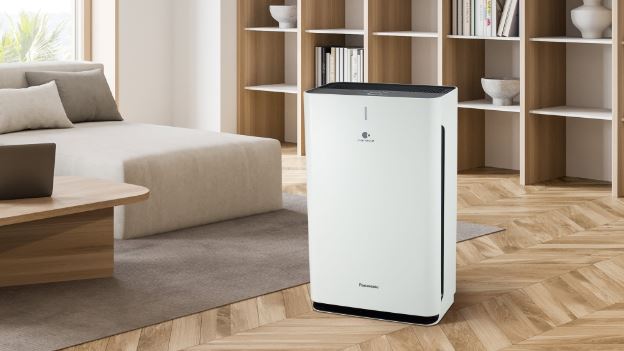Breathe Happy: Air Purifiers for a Joyful Home
Breathe Happy: Air Purifiers for a Joyful Home
Blog Article
In today's health-focused society, the air quality indoors and out has taken center stage for homeowners and health-conscious individuals. With increasing environmental pollution and a greater awareness of the influence of indoor air quality on overall health on our health, it's no surprise that the air purifier market is booming.
Air purifiers are devices that remove contaminants from the air in a given area, promoting healthier indoor air. They are ideal for people with allergies, asthma, or other respiratory issues as they can significantly lower the presence of allergens, pollutants, and irritants in the air. Healthy individuals, too can take advantage of air purifiers, as they provide reassurance and safeguard against airborne diseases.
This guide will explore in detail the world of air purifiers, discussing the perks they offer, the variety of options on the market, key considerations when selecting the right model, and how to get the most out of your device. By the end, you should have a solid comprehension of air purifiers and be able to make an informed decision about whether investing in one is the smart move for you and your family.

Understanding Air Pollutants and Their Impact on Health
To grasp the importance of air purification, it's vital to understand the types of pollutants they target and the likely impact of exposure to these contaminants.
Indoor air pollutants can be broadly grouped into the following three categories:
- Airborne Particles: This includes tiny solid and liquid particles present in the air. Examples include dust, smoke, pollen, pet dander, mold spores, and more. Particulate matter can cause respiratory issues and set off allergic responses.
- VOCs: A Concern for Indoor Air: VOCs are gases emitted from various solids or liquids. Sources of VOCs include aerosol sprays, cleaning products, paints, and pesticides, among others. Exposure to VOCs can lead to eye, nose, and throat irritation, headaches, and nausea.
- Biological Hazards: These include bacteria, viruses, mold, and mildew. They can cause a range of health issues, from mild allergic reactions to severe infections.
The impact of these contaminants on human health can greatly vary. For individuals with respiratory conditions or compromised immune systems, exposure to indoor air pollutants can lead to severe complications. Even for healthy people, long-term exposure to certain pollutants can contribute to the development of respiratory issues and other health problems over time.

How Air Purifiers Work
Air purifiers use a combination of physical and chemical processes to effectively eliminate contaminants. Understanding the fundamental processes employed by purifiers will help you understand their efficiency and the variety of options on the market.
Here are the core processes and cutting-edge technologies used in air purifiers:
- The Power of Mechanical Filtration: This is the most widely used approach used in air purifiers. It involves using filters designed to trap airborne particles as air is passed through the filtration system. The filter composition can differ, each designed to trap particular particle types. For example:
- Initial Defense: Pre-filters: These are usually the first line of defense, capturing larger particles like dust, hair, and similar larger particles.
- HEPA Filters: The Gold Standard: HEPA filters are exceptionally efficient at trapping tiny particles, including pollen, dust mites, and some bacteria and viruses. To be labeled a bona fide HEPA filter, it must effectively capture particles as small as 0.3 microns, with a minimum efficiency of 99.97%.
- carbon filtration: These filters are designed to adsorb odors, VOCs, and gaseous pollutants.
- Ionizers: Charging Ahead: Ionizers use charged particles to create an abundance of negative ions, which latch onto airborne particles. The charged particles are drawn to nearby surfaces or the purifier itself.
- Ozone's Double-Edged Sword: Some air purifiers use ozone as a potent disinfectant to destroy contaminants. While effective, excessive ozone exposure carries risks so these types of purifiers should be used with moderation and in well-ventilated areas.
- Ultraviolet (UV) Light: UV light can be used to effectively eliminate bacteria, viruses, and mold. UV light is often used in combination with a filter to capture particles first, followed by UV light to neutralize any remaining biological threats.
Selecting the Perfect Purifier
With a wide array of options available, selecting the ideal air purification system can be a daunting task. It's important to consider a range of criteria to ensure you make the correct choice for your specific needs and space.
Here are some essential factors to weigh:
- Sizing Up the Room: Air purifiers are typically rated for specific room sizes, so it's important to choose a model that can adequately cater to the room size. Most purifiers will list a suggested room size or CADR rating, which indicates the volume of filtered air delivered per minute.
- Type of Contaminants: Identify the particular contaminants you want to target. If you suffer from allergies, look for a purifier with a HEPA filtration system. For eliminating odors, consider a model with a activated carbon filter. If you're concerned about pathogenic microorganisms, a purifier with UV light disinfection might be best.
- Whisper-quiet Performance: Air purifiers can produce a range of noise outputs, so if you plan to use it in a bedroom or quiet space, look for models with a low-noise or sleep mode.
- Maintenance and Costs: Consider the ongoing costs and maintenance requirements of the purifier. HEPA filters, for example, typically need to be replaced every 6-12 months, depending on use and environmental factors. Factor in the cost of replacement filters when making your choice.
- Additional Features: Many purifiers offer smart features like air quality sensors, automatic modes, and Wi-Fi connectivity, allowing remote control and monitoring. These features can enhance the convenience and effectiveness of your purifier.
Unlocking the Full Potential of Your Air Purifier
Once you've invested in an air purifier and set it up, there are several things you can do to ensure it operates at optimal levels and delivers the maximum benefits:
- Strategic Positioning: Position your purifier in an central location, free from obstacles, to ensure efficient air circulation. Avoid placing it near windows or doors as drafts can impact its efficiency.
- Consistent Use: For the best results, it's recommended to run your purifier regularly. Many models have energy-saving features or smart modes that adjust the fan speed based on air quality, so you can maintain healthy air quality while conserving energy.
- Filter Maintenance: Regularly check and replace filters as recommended by the manufacturer. Over time, filters become saturated with particles, affecting efficiency. Set a reminder for filter changes so you don't forget.
- Minimize Indoor Pollutants: Alongside using an air purifier, take steps to limit indoor contaminants. This could include frequent dusting and vacuuming, opting for natural cleaning solutions, and reducing chemical or aerosol usage. Report this page